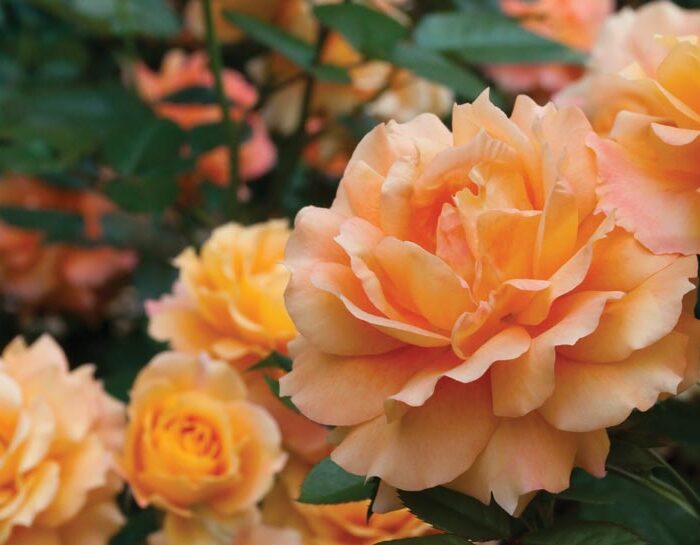Nurturing Roses
By Wendy Franzen of Fletcher & Fork
By Wendy Franzen of Fletcher & Fork


June ushers in the first, long-awaited roses of the season. All gardeners know the delight imparted by these classic beauties is often eclipsed by their infamous need to be pampered. Flawless and sturdy dark green leaves quickly devolve into sad yellow swaths spotted in black, while soft blossoms exuding that famous perfume become the devoured, ramshackle dwellings of Japanese beetles. Truth be told, I pulled up all of my rose bushes last season because they were draining me of my gardening joy. Not willing to give up, I turned to Steve Fiore of Rocco Fiore & Sons for advice. Fiore learned the tips-of-the-trade from his father Rocco, a master gardener and lifelong rose devotee. He explains that laying the proper groundwork and following a few important steps will help create happy and robust specimens that offer years of enjoyment.
Rocco Fiore & Sons will create the ultimate rose garden for you, from design to installation and weekly maintenance. For inquiries, visit roccofiore.com.
ROSE RULES:
1. Choose a spot with six to eight hours of sunlight. Roses thrive in direct, full sun.
2. Install proper drainage. When the Fiore team installs proper rose gardens, they excavate down 16 to 18 inches, add 4 to 6 inches of gravel, then top with a mixture of sand, planting soil, and organic fertilizer. Failure is often a result of heavy, clay-laden soil, so this step is extremely important.
3. Create airflow. The gravel foundation assists in this, but you should also plant roses 3-feet apart.
4. Water from the base, not from the top. Sprinklers and over-the-top watering practices promote mold and fungus, and along with it, the dreaded black-spotted yellow leaves. If leaves do become infected, remove from the plant and ground immediately, and dispose of them rather than composting.
5. Fertilize every twelve days with a well-balanced, organic rose fertilizer for healthy growth.
6. Deadhead regularly. Encourage more blooms by removing spent ones, pruning at the first five-leaflet branch. Cut at an angle, just above an outward facing leaflet.
7. Choose your plants wisely. Shrub roses, for instance, are much lower maintenance, and plants grown locally are more likely to thrive. Rocco Fiore & Sons has their own 200-acre nursery where they grow many of the roses they install.
8. Control pests like Japanese beetles and ward off disease with weekly treatments of organic Neem oil, applying in early morning or evening when beneficial insects are the least active.


Sign Up for the JWC Media Email